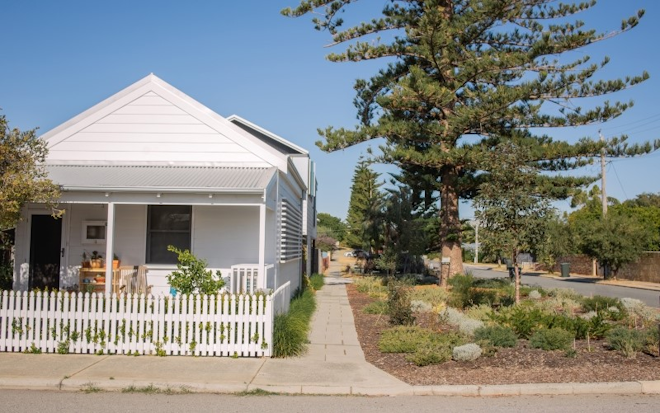404. Vegetation on urban roadside verges
In a project led by Claire Doll and Curtis Rollins, we explored the preferences of Perth residents for the vegetation (apart from trees) planted on roadside verges in their neighbourhoods. While some of them prefer to see traditional watered lawns, many more of them like native vegetation. This is an intriguing finding because the proportion of people who actually have native vegetation is somewhat less than the proportion who say they prefer it most.
In our survey, we gave people plenty of groundcover options to choose from: watered grass, non-watered grass, native vegetation, non-native vegetation (other than grass), pavement, artificial turf and mulch. Using a technique called “best-worst scaling” we were able to rank those options from least preferred to most preferred for verges. We broke the respondents down into various groups whose preferences differ from other groups depending on the characteristics of people within them.
Out of the available groundcovers, two stood out as being far more popular than the others: native vegetation (strongly supported by 54% of respondents) and watered grass (25%). So, for about 80% of people, they strongly preferred one or the other of these two main options, and they strongly preferred not to have the other one spoiling their view.

Interestingly, only 22% of respondents had a verge in front of their property with at least some native vegetation – much less than the number who say they like native-vegetation verges. Setting aside the risk that they gave us inaccurate information (always possible in a survey), several things might account for the disparity.
- We know that the number of native-vegetation verges is growing over time, so it may be that some people will install one but haven’t got to it yet. It does take some time and effort, and people are busy, of course.
- It seems likely that some people are happy to see native vegetation on their neighbours’ verges but don’t think it is worth the effort to install one on their own verge. (The question in the survey asked about verges “in your neighbourhood”, not just people’s own verges.)
- Some people may be reluctant to be the first in their local neighbourhood to install a native verge, even if they would like to have one.
That last dot point implies that people are being influenced by social norms – if everyone around you has grass, you tend to stick with grass. In the survey, we find evidence to support this. Our statistics show that respondents who have nearby neighbours with native vegetation on their verges are more likely to express strong preferences for native vegetation and less likely to express strong preferences for watered grass.
The last two of those explanations indicate that establishing a native vegetation verge generates “positive externalities”, meaning that other people capture some benefits without necessarily generating benefits themselves. Economists are interested in positive externalities because they suggest that there could be opportunities for initiatives by governments to generate benefits that would not otherwise happen.
Some local governments in Perth are already providing support of various kinds to encourage establishment of native-vegetation verges, and our findings provide evidence that this could well be a good idea.
The findings about social norms suggest that there could be additional benefits in targeting support in a way that particularly encourages someone to be the first in their local area to establish a native-vegetation verge. This could provide some examples of native verge gardens in grass-dominant areas, which inspire some neighbours to follow suit.
Further reading
Doll, C.A., Burton, M.P., Pannell, D.J., Rehdanz, K., Meyerhoff, J. and Rollins, C.L. (2024). Public preferences for water-conserving groundcovers on verges, Water Resources and Economics 46, 100239. (The paper is available for free here: https://doi.org/10.1016/j.wre.2024.100239)
In some older inner suburbs, built before cars and driveways were common, parking is often so cramped that verges are at a premium for this purpose. It would be interesting to know if Councils vary in what can be done on verges (they plant the street trees so have a number of bylaws on what owners can or cannot do). More recently there has also been great encouragement from community groups to use verges for food production, often in installed raised beds, as demonstrated on several ‘Gardening Australia’ programs. A further study on Council regulations, and other government agency rulings, would be very interesting…and revealing I suspect, that they vary with the relative affluence and age of the suburbs.
Interesting that supp info shows a series of questions relating to willingness to pay. Is it the intention to publish additional work from Survey?